Rouge.



Welcome back to the second edition of the Rouge Magazine In this edition, we have decided to focus on the topic of rebellion in fashion: the epitome of innovation in the fashion industry. We want to acknowledge the courage and the intelligence individuals have taken in their respective specialities to lead the industry into something new We encouraged our writers to explore pivotal and iconic moments when designers took risks to reinterpret our conventional views on fashion.
We highlight key figures who have led rebellious initiatives in the industry Our first study is of Pat McGrath who has held a fundamental role in the makeup and beauty industry. She has broken the boundaries of makeup through the use of unconventional colours and ingredients in her runway looks, accentuating the features of the models to give them an extrinsic look Also movements like the underground punk subculture transformed concepts of music, behaviour, beauty and style and shocked many. Designers like Alexander McQueen took elements of this movement and brought them to the Runway and high fashion. He was a true pioneer in defying conventionality throughout his career
Since you last saw us, our team has grown and we have learnt a tremendous amount from our previous issue. Our phenomenal team of writers has come together to create a dynamic set of articles which display academic curiosity, creativity and a critical view of current and past fashion trends. In this issue, we have brought back popular columns such as Fashions Dirty Secrets, Designer Spotlight, Recommended Viewings, and Decade in Detail and we have introduced two new columns: Upcoming Designers and Memoir as well as our main editorial spotlight on Rebellion in the industry. Enjoy!
PAT MCGRATH
Exploring her relationship with runway and editorial makeup
By Cynthia Wang
EXPOSÉ
The Environmental Toll of the Fashion Industry
By Amy Jones
DESIGNER SPOTLIGHT
Alexander McQueen
By Ysabel Xu
UPCOMING DESIGNERS
Magda Burtym
By Coco Craft
DECADE IN DETAIL
The 1990s
By Tiggy Devlin
RECOMMENDED VIEWINGS
By Sofia Fritchie
MEMOIR
Andre Leon Talley
Living at Large
By Ursula Rowland
By Waka Horie
REBELLION IN PHOTOGRAPHY
By Piper Chatwin
EXPLORING THE IMPACT of Japanese Fashion on Western Rebellion
By Heidi Muili
WORDSEARCH
By Scarlett Playfair
EDITORS
Waka HORIE
Scarlett PLAYFAIR
GRAPHIC DESIGN AND CITING
Scarlett PLAYFAIR
COVER PHOTOGRAPHY
Waka HORIE
WRITERS
Coco CRAFT
Tiggy DEVLIN
Sofia FRITCHIE
Waka HORIE
Amy JONES
Heidi MUILI
Ursula ROWLAND
Cynthia WANG
Ysabel XU
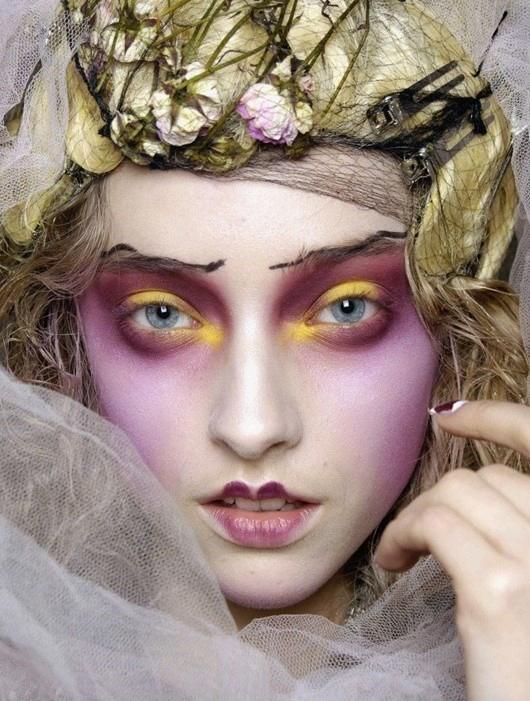
EXPLORING HER RELATIONSHIP WITH RUNWAY AND EDITORIAL
BY CYNTHIA WANG

RRecently, Pat McGrath's viral Maison Margiela makeup has caused an online sensation over her phenomenal, mindbending creativity. Having been named one of the most influential people in the world by Anna Wintour and made a Member of the Order of the British Empire for services to the fashion and beauty industry by Queen Elizabeth II, she is considered the most prestigious in her industry (Selfridges&Co, n.d.). Although I'm sure you ' ve heard many of your favourite celebrities obsessing over how good her products are, you never hear

much about the woman herself and there's undeniably still an underrated appreciation for the self-made billionaire herself, specifically her life story. In this article, I will be exploring her visions, development and incomparable work ethic which are all characteristics that have highly contributed to her success.
As a teenager, McGrath had always been inspired by the thriving London Scene; Punk, Goth and Blitz Kids allowed her to explore and realize that makeup artistry was a career she was set on pursuing. Having only completed a foundation course in art at Northampton College, (Sowray, 2012)(Bailly, 2021) McGrath picked things up and watched how everything came together through experiences she had with Kim Bowen She met Kim at a club in Soho and had the opportunity to follow her to i-
D Magazine shoots McGrath revealed that being on set with Kim deepened her obsession with beauty, fashion and makeup This led to her first major project when she received a phone call requesting her to tour Japan with Caron Wheeler Later on in the 1990s, her ascent to the pinnacle of fashion began following an introduction to Steven Meisel. As two artistical intellects, they created and designed editorial stories for every issue of Vogue Italia. Their collaborations have left revolutionary, iconic images for publications to this day (Schnurr, 2021)




As mentioned before, despite having no forming train successfully built a respected empire in the fashion, and makeup industry. In a recent interview, McGrath attributed most of her prolific creativity to her single Jamaican immigrant mother: Jean McGrath Jean was a keen follower of fashion and has always supported her daughter’s dreams ''Choose a job in the arts, dear That way no one can ever tell you you ' re wrong. '' Through her mother's influence, Pat was able to learn the fundamental shades of eye shadows and also colour theory '' as there wasn't anything out there for black skin''. In the decades since Pat has pushed and set a standard for the makeup industry far beyond what anyone ever imagined it could be Her incredible creativity has successfully produced many revolutionary looks; from covering models' faces in masks made of tulle and 1,500 Swarovski crystals to framing eyes in snakeskin and chain mail and finally, in 2014 using powdered pigment and real latex paint to make eyelids look like glass(Bailly, 2021). One of the most inspirational qualities of McGrath is her ability to be meticulous and persevere despite how challenging it is; 'Being creative and resilient is key' There is seemingly nothing that McGrath is afraid to take on

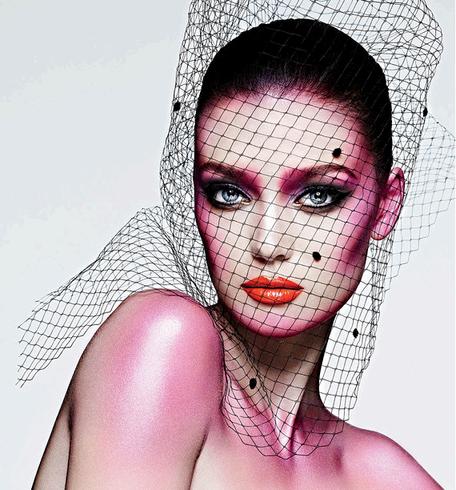
Whilst McGrath was still setting global beauty trends and considered one of the most in demand makeup artists, she was formulating and perfecting the launch of her eponymous brand, PAT MCGRATH LABS In 2015, her vision and intention for the brand was a line of products that could be used on a daily basis to streamline and simplify the often complex looks she was asked to execute for designers. Despite her instant, meteoric success of GOLD 001, a debut product that sold out in record-breaking time, she still faced challenges (Selfridges&Co, n.d.)(Beauty Matter, 2017)(Pat McGrath, n d ) She admits that it is difficult to not follow the production cycle of traditional beauty brands, but through her devotion and empowering team, they have managed to ignite the world with their unique point of view.
By Amy Jones
We all know and love to buy from top brands like Urban Outfitters and Brandy Melville, but do we know the impact that our purchases have on the environment? Accordingly, I am going to do a deep dive into a few ways in which the fashion industry has a detrimental impact on our global ecosystems
One environmental issue regarding the fashion industry comes from the raw material of cotton, around 75% of the world's clothing products contain cotton (team, 2024); Cotton is the biggest natural fibre used for manufacturing cloth for our clothes, accounting for 33% of all fibres used in the textiles industry, employing over 250 million people globally, and employing 7% of the total workforce in developing countries Unfortunately, CO2 emissions from growing and harvesting cotton are extremely high This is due to the high levels of pest infestation within the cotton plants that require intensive fertilizers In particular, synthetic fertilizers that release nitrous oxide, a greenhouse gas, are used in the atmosphere To make matters worse, nitrous oxide is known to be 310 times more potent than carbon dioxide
meaning it enhances the greenhouse effect In addition, due to the high demand for cotton, extensive deforestation has occurred to clear land for more cotton growth, as the fashion industry expands and demand increases Combusting vegetation to clear the land releases CO2 into the atmosphere, as well as removing the previous vegetation. Secondly, cotton consumes huge volumes of water, around 2700 litres of water is needed to make one cotton tshirt which is enough drinking water for an individual for two years This vast use of water is depleting countries of clean water sources where the availability is already scarce. This has occurred in regions in India This is because to collect the water for irrigation and other practices used to harvest the cotton, they collect groundwater which are water sources for local villages and towns, consequently making their supply short (Conde Nast, n d ) (Okafor, 2022) One of the last issues I am going to mention in relation to cotton farming is the resultant soil degradation left by the monocultural system. This is because, due to the aim of creating a high yield of cotton in order to make a high profit, only cotton is planted. This has a
detrimental impact on the soil quality as only one root exists which causes soil erosion, impacting negative consequences for local ecosystems. (Study.com, n.d.)
Cotton is used for virtually every item in the fashion industry, this is due to its lightweight and flexible nature. However, the severe impacts that this material has on the environment do not mirror its positive impacts on the fashion industry. This may or may not come as a shock to you but right now you are wearing plastic clothes About 8% of European plastics released into the oceans are from synthetic textiles (European Environment Agency, 2023). Around 60% of material made into clothing is made out of plastic and this includes clothes made from nylon, polyester and acrylic For example, polyester is made from synthetic fibres which are derived from a polymer called polyethene terephthalate which is a type of thermoplastic polyester These types of materials are light, flexible, with a quick drying time and most importantly cheap (Crann Organic, n.d). Every time clothes produced from these fibres are washed, tiny microplastics are released from the material and eventually flow out of the machine along with the wastewater. These microplastics are around 5mm in size, and therefore become very hard to see (UN environmental agency, 2019). As this plastic enters our sea, it floats along the sea floor, being mistaken for food or phytoplankton The resultant impacts of consuming microplastics are of course harmful, as you would expect. The harmful impacts include; growth delay, oxidative stress, reduction of feeding activity
“ Buy less, choose well, make it last
- Stella McCartney
activity, genotoxicity, neurotoxicity and the reduction of reproductive fitness. A specific example of this is microalgae where microplastics cause reduced photosynthetic activity and therefore reduced growth Another example is crustaceans, where the consumption of microplastics causes reduced fecundity, delayed offspring development, enzyme activity impairment, and behavioural alteration, especially when they are exposed to polystyrene microbeads. sjfnfkjfnka (K Nanthini, 2022) Researchers from the University of Canterbury in New Zealand have even found microplastics in the fresh Antarctic snow for the first time in 2022 To research, they collected 19 samples of fresh snow from the Ross Ice shelf in Antarctica The results were that they found an average of 29 particles of plastic per litre of snow This shows that microplastics, not only from fabrics travel to the remotest parts of the world and it's possible that these plastics could have travelled airborne (Newburger, 2022) Fabrics which do not contain or release microplastics include organic cotton, linen and natural fibres. (Kell, n.d.). So, how can you you reduce this? The answer many people would say is to check the materials which your clothes are made from on the labels However, in my opinion, this is unrealistic and to buy clothes made from plastic-free fibres is very expensive Instead, reduce the washing of your clothes, we don’t need to wash clothes as much as we do so next time, think twice whether it does need washing, for example with sweaters. It's found that sweaters can be worn 6 times before needing to be washed. lhkbkjnkjnljn

Lastly, one of the issues that I am mentioning in my article, is the use of fabric dye resulting in water contamination. Fabric dying and treatment processes create 20% of the world's wastewater and the wastewater contains toxic chemicals which are released into nearby water sources as a result of dying fabrics for the vibrant and desired effect The chemicals include oil, phenol, dye, pesticides and heavy metals such as copper and mercury The local polluted water sources are then used to irrigate crops which in turn contaminates local food sources, as well as having detrimental impacts on the local ecosystems as it can prevent photosynthetic activity, therefore inhibiting plant growth. This has mainly occurred in China and India due to the high amount of textile manufacturing. (Bandera, 2022). A specific example of this occurring is in Tirupper, which is a city on the banks of Southern India. It is here where up to 90% of India’s cotton and knitted exports originate from. In the city, there are many bleaching and embroidery factories and products are exported to the EU and America. The industry in the city brings in around 3 billion a year, supporting the livelihood of many residents.
The river Noyyal is a tributary of the Kaveri River and is a vital source for the city as it is used for bathing and drinking water as well as irrigation. The river sustains the water needs of around 2 million people Although, due to the high toxic activity related to the industries along the river, there are high rates of contaminated wastewater flowing into the river The river has been reported to have a distinct odour and frequently froths. Research has found that along the river, near the industrial clusters, there are high levels of copper, zinc and lead, along with other carcinogenic metals This has made the water unfit for drinking and unfit for the irrigation of plants This in turn reduces the economic activity of those relying on the river for activities, for example, agriculture, resulting in a loss of income. Although water treatment plants have been built, these have not had an effective impact so far on the quality of the water within the river (A, 2022). Overall, the textile industry is polluting local water sources for those who live around them, making a huge impact on the lives of the Tirupper people and the ecosystems around them.
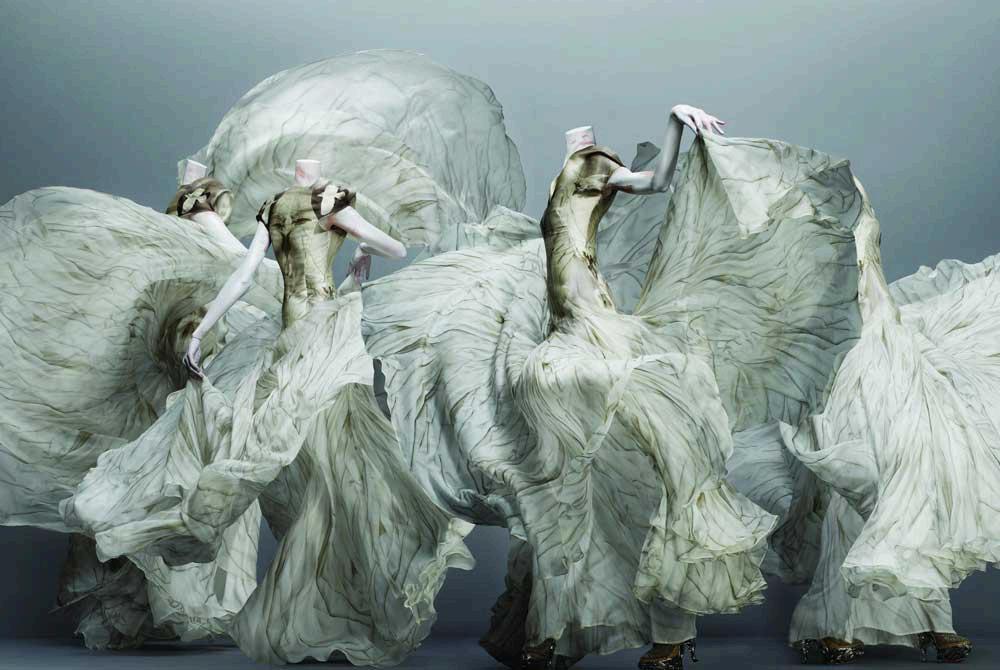
By Ysabel XU

Wxander McQueen was one of the esigner of our generation Born ondon, McQueen was known to d families as 'Lee'
ol at the young age of sixteen to ntice at Mayfair's Savile Row tailoring). At the age of 20 he a pattern cutter for the avantased Japanese designer Koji ter on moved to Milan to join Romeo Gigli, whom he had ong time. A few years later, back to London to complete his design at Central Saint Martins m to further enrich his skill and s kick starting his career His on called "Jack the Ripper Stalks ked and largely impacted many, Blow, a popular magazine editor whole collection A shy, workingn with no questions became en. (V&A, n.d.)
years since he had graduated Q ppointed the head designer at Givenchy succeeding John Galliano which kick started his extremely successful career. During McQueen’s time at Givenchy, he introduced the popular trend of ‘bumster pants’ - named due to its extremely low-cut waistline His job may have been seen as prestigious on the outside, however, his time at Givenchy was tough, this short lived xrelatioshDo, ug
relationship quickly ended just 5 years later with McQueen claiming that the brand had 'constrained' his creativity. Even with his so called ‘restrictive designs’, he had won The British Designer of the Year three times during his time at Givenchy (Biography, 2022)
McQueen has stated previously that his works are fundamentally been inspired by tailoring as well as European history. Due to his prior apprenticeship as a tailor, he had mentioned that before Givenchy he hadn't quite understood the concept of 'lightness' or softness that came with many modern day clothing today. Therefore, during his time at the brand, he learned to construct light and flowy clothing. (V&A, n.d.)
Moreover, McQueen was heavily inspired by global influences Africa, China, Turkey and India were all countries that sparked his imagination and creativity, though Japan was probably the most significant The Japanese Kimono is a garment that has repeatedly made its appearance in McQueen's collections throughout the years.
Throughout his career, it is evident that he wanted to 'challenge history' as he enjoyed expressing the radical rerepresentation of historical narratives. He mentioned that another great influence that impacted
impacted McQueen's career w the V&A Museum. In his ea life, he had said that he wou visit the museum at least once week for inspiration as he fou the textiles and woodcarv areas especially fascinating, " collections at the V&A never f to intrigue and inspire m (V&A, n d ) Despite revolutionary designs a strategic business proposa McQueen was ultimat someone who wanted to use designs for good In 1998, he was one of the first designers to invite a Paralympic athlete and double amputee to the runway Aimee Mullins opened his Spring/Summer in ‘99 wearing a pair of artfully carved wooden prosthetic lights. Her participation was utterly significant for the fashion industry as he was one of the firs of many to bring diversity and change onto the runway Furthermore, McQueen’s catwalk shows were noted for their drama and often included elements o performance art such as a mode being sprayed by robots or a lifesize illusion of Kate Moss in the autumn/winter of 2006.
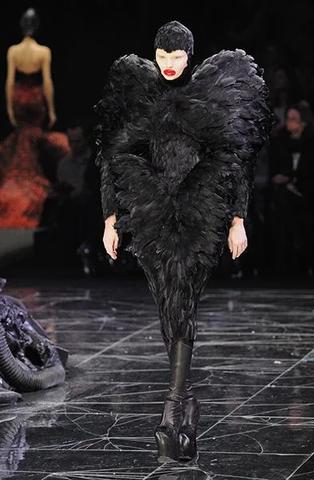

February 11th, 2010 marks the day of a tragedy in the fashion industry when Lee Alexander McQueen committed suicide at age 40 in his home in Mayfair London, shortly after the death of his mother Despite his brief life, he had assuredly made a significant impact on the fashion industry and culture (Biography, 2022)
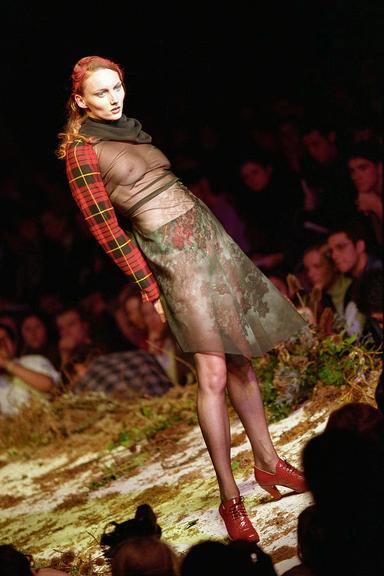



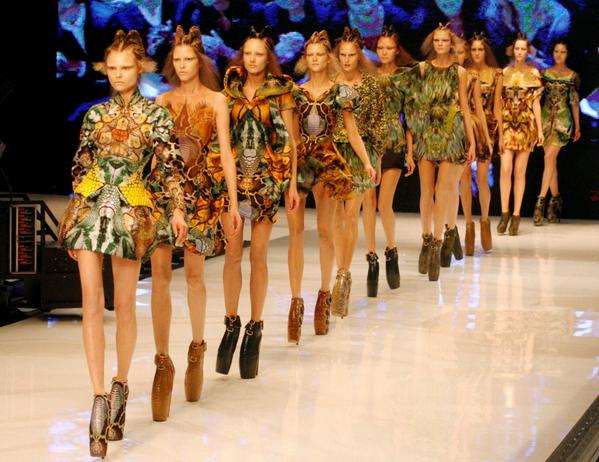



When Magda Butrym founded her eponymous label in 2014, she sought to bring a sense of defiant nostalgia to her Polish heritage. Born in the 1980s, a time characterized in many countries by women in the workforce wearing powerful suits, edgy fashion, leather, and shoulder pads. This wasn’t the case in Magda’s hometown Silesia, a 3 hour train ride from Poland’s capital city. Poland was a very traditional and a communist country for the vast majority of the 80s Its citizens struggled to find a sense of individuality and there was not much of a history of fashion. In an interview with Flannels, Magda said “My earliest fashion memory is deep-rooted in my family” explaining how they used their clothes to “ express their personalities and aspire to more joy in life” (Mcfall, Marni Rose, 2023). These aspects of her upbringing have made her see fashion from a young age as a form of self-expression Since she founded her brand, she has been reflecting on the political and social freedom her family never enjoyed, been driven by the way they inspired themselves at the time, and how she can inspire herself now Her message is for everyone to be their muse.
After working as a stylist for a number of years, Magda saw a real lack of elegance in the everyday clothing available to her clients; "I was receiving all of this precious data and at a certain point, I felt that I had a pretty good idea what they would like to wear, what they would enjoy and what they wish they could have " (De Klerk, Amy, 2018). In pursuit of self-expression once again, she took advantage of this gap in the market and started designing Her first promotional triumph occurred in Paris during fashion week at a time when, as a small Polish designer, she wasn’t even
thinking about showing collections there Sat down in a restaurant wearing her own piece, she was approached by Kim Kardashian who is, for better or for worse, undeniably influential; Kim asked if she could have a skirt made One appearance in public and Magda’s phone was ringing off the hook with stores asking to buy the clothes (Repcyte, Monica). Her romantic designs have since allured the likes of Vogue many times.


As well as her clientele and life changing Parisian restaurants, the Magda Butrym brand is heavily driven by Magda’s home country and her own experiences, and this influence is palpable in her portfolio Florals are incorporated into many of her clothes, conveying the intimate experience she details about the Warsaw flower market. She told Vogue: “Flowers are something I can’t live without, and I like the whole experience of going to the hbjhbjh market very early in the morning and picking everything by hand from the trusted vendors I know. The market in Warsaw is quite old school, and I love the atmosphere.” (Kim, Monica, 2019). This is the kind of nostalgia she aims to manifest through her clothes. Another focal point of the pieces is their unique architecture and use of fabric to accentuate certain parts of the body; she believes “the dress is there to complement the body and not the other way around, and I am obsessed with getting this point right.”
A perfect example is this mini dress, with lots of structure at the hips and a draped fabric to emphasise them, this dress perfectly complements a woman ’ s body the way it was intended to. It is part of her SS24 collection below which, in a full circle moment, was showcased in Paris Fashion Week this year
Her newest collection is a mix of Slavic craftsmanship and modern design elements. As the streets of Europe and beyond become graced with these pieces, Magda Butrym thinks about what is next for her brand; keeping one foot in her past and one in the everchanging future of fashion. She’s already loved by many, and she's certainly one to be watched.
By Tiggy Devlin
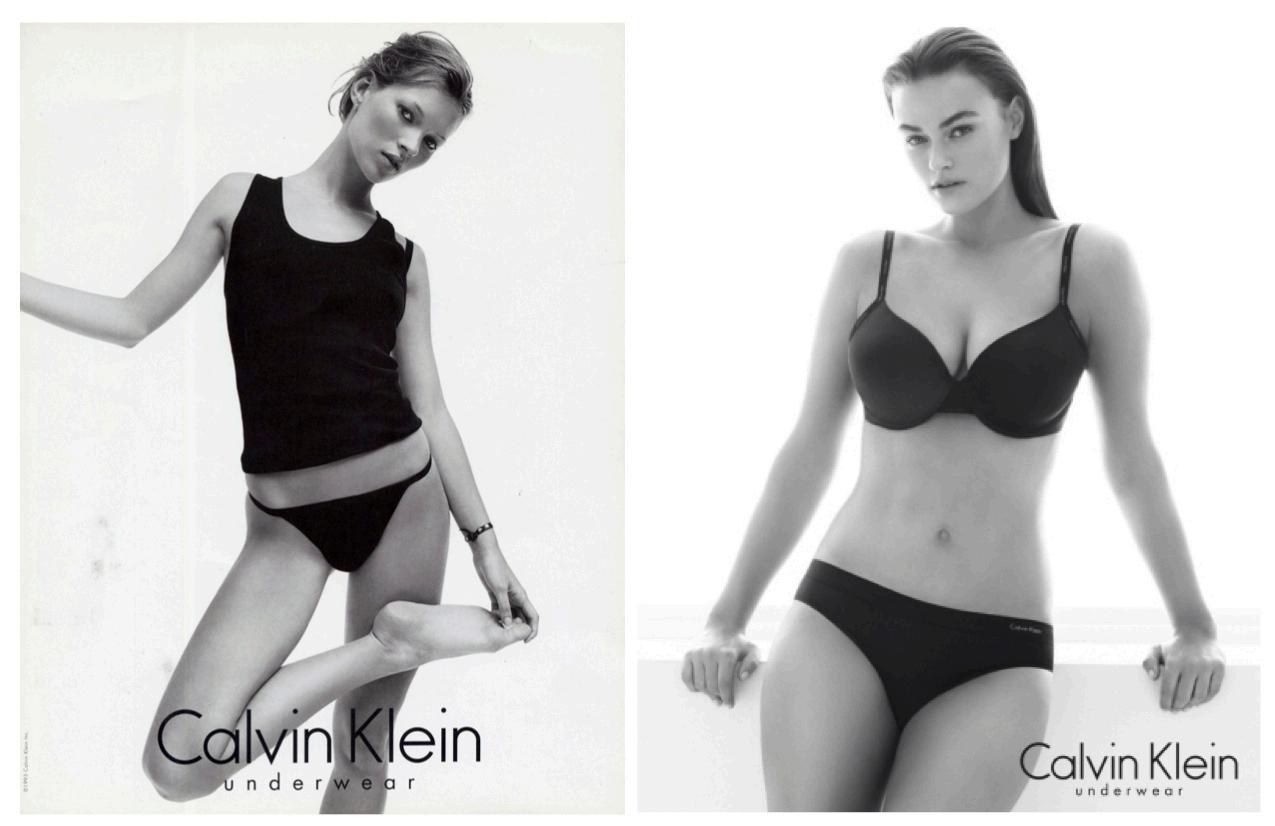
The 1990s was a transformative decade: dynamic political, cultural, and technological shifts all left a profound mark on the world of fashion In the final decade of the 20th century, despite occasional phases of more formal attire, the overall trajectory of fashion emphasized a pervasive shift towards minimalism and informality There were resemblances of bright colours and athletic wear of the late 80s’ but the music and film industry heavily influenced popular trends of the 1990s: denim overalls, miniskirts, cropped cardigans (Masterclass, 2022)
Cultural movements had a significant impact on western society and partly shaped people’s perceptions, hence also impacting fashion trends. The rise of grunge music, originating in the early 1990s, surfaced in the Pacific Northwest, centered
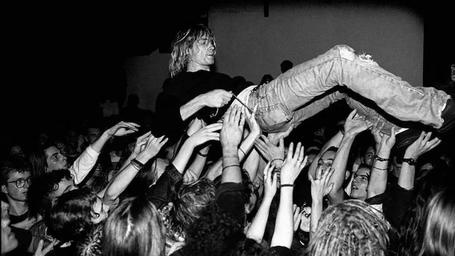
around Seattle. Recognized for its unrefined and rugged sound, grunge frequently incorporated elements from punk rock and heavy metal music. This surge of ‘ grunge ’ in the music industry created a fashion phenomenon, as it challenged traditional fashion norms and posed an "anti-fashion" ethos, favoring a more casual and unkempt style The trends associated with grunge were flannel shirts, ripped jeans, printed granny dresses and Dr Martens boots (Night, 2018) Celebrities dressed in the ‘grudge’ style included Kurt Cobain and Nirvana; they were seen as the ultimate rebels of their generation and the cultural shifts were echoed in fashion choices, emphasizing a more laid-back and individualistic approach to styling pieces (Davis, 2023) In April 2023, Teen Vogue observed that ‘Grunge never really goes away, and celebrities like Bella Hadid, Kylie Jenner and Miley Cyrus often channel the '90s aesthetic in their red carpet and street style fashion.’ ,The grunge style really did have a consequential impact on the fashion world (Nesvig, 2023)
Numerous impactful designers left a profound mark on the fashion world throughout the 1990s
Marc Jacobs was hired as the creative director for Perry Ellis in 1988 He initially pursued a style of relaxed Americani Anitially
sophistication for a few seasons However, he later shifted gears, drawing inspiration from Seattle's grunge movement for an astonishing Spring/ Summer 1993 show. Ordinary two-dollar flannel shirts were transformed into silk garments adorned with plaid patterns, while traditional lumberjack thermals were re-imagined using luxurious cashmere. Even Kurt Cobain's iconic floral granny dress served as inspiration for flowing chiffon ensembles, paired effortlessly with untied Doc Martens or Converses Jacobs was key in shaping the grunge aesthetic as he seamlessly merged haute couture with streetwear (Phelps & Borrelli-Persson, 2015)(Madsen, 2013).
At the start of the decade, Gianni Versace's daring designs began to attract attention for their animal patterns, vivid colors, and opulent fabrics, which was prominently inspired by ancient Greek artwork His distinct style distinguished Versace from insfefnsi

his peers, propelling him into a dominant position in the fashion world. The Fall 1991 collection by Versace marked a milestone with its groundbreaking fusion of leather, lace, and metal mesh Following, was the successful Spring 1992 collection which showcased vibrant prints and bold colors, experimenting with texture and the visual spectrum, yet again leaving the fashion world in awe Beyond his creative endeavours, Versace formed close relationships with rising supermodels such as Naomi Campbell and Cindy Crawford. Later, Madonna, Elton John and prince Prince were also styled by Versace in Versace head to toe, elevating his brand’s visibility and influence(Medium, 2023)
The trend known as "heroin chic" emerged during the 1990s as a fashionable movement amongst the upper class, incorporating visual elements from the imagery of heroin addicts and their surroundings don into fashion photography The heroic chic fashion trend was popular-ized by fashion photographers such as Corinne Day and Juergen Teller and characterized a waiflike aesthetic, sunken eyes, and dishevelled appearances; as well (Legacy Healing, n d , adopted by luxury fashion labels like Calvin Klein and Prada Photography associated with "heroin chic" depicted models in gritty urban environments, often with minimal makeup and styled to evoke a casual, just-awakened appearance. Kate Moss ‘carried’ the heroin chic trend, being well known for her thin and waif fvve
like figure Again, the look was intentionally ‘anti glamorous’, challenging the societal norms and perceptions of fashion at the time. Kate Moss's other partnerships with photographers like Corinne Day, notably the pioneering shoot for The Face magazine in 1993, significantly boosted the popularity of the "heroin chic" look and solidified its significance within the fashion industry's history Other models such as Jaime King and Jodie Kidd were not only incredibly thin, but almost angular and known for the heroin chic look (they tended to have the fdvfv grunge look as well)
“The early 90s were an especially marvelous period for fashion, because it was the peak of glamour and there were no limits to what you could do”
-Donatella Versace
However, criticism arose for glorifying drug use and deemed morally reprehensible, with concerns raised about its potential to influence youthful audiences With young fashion photographer Davide Sorrenti’s death at the age of 20, who was known for photographing models who not just looked heroin chic, but often who were on heroin, v the controversial trend came to an end amidst scandal (Recovery village, 2023)
The 1990s stands as a testament to the dynamic remix of culture, fashion and society. As the world navigated major changes, the fashion industry mirrored these changes, embracing diversity and individual expression and at times challenging societal norms The legacy of the decade persists in the continued blurring of traditional fashion boundaries, reminding us that style is not just about what we wear but a reflection of the times in which we live

The 2006 film Marie Antoinette chronicles the tragic but extravagant life of Marie Antoinette (Kirsten Dunst) the last Queen of France (IMDb, n.d.). The film begins with her arranged marriage to King Louis XVI of France when she was only fourteen, demanding her to rapidly acclimatise to life at Versailles. Despite having difficulties at first, Marie Antoinette bears many children, meaning she must learn to juggle between her family and political life Her extravagant lifestyle and apparent lack of compassion for the plight of the starving peasants greatly impacted her popularity and only exacerbated the growing calls for revolution. This eventually resulted in her and her husband being taken from Versailles towards the end of the film We are left with the foreboding sense of what is to come for her and her family Although not shown in the film, Marie Antoinette and her husband King Louis XVI, were executed by guillotine on October 16th 1793, marking the much desired end of the French monarchy (Britannica, n.d.).
Although the film ends on rather a bleak note, it has received great attention for its stylistic and lavish costume design, winning it and its costume designer Milena Canonero multiple Academy Awards (IMDb, n.d.). Now a household name in the world of costume design and with the help of a large budget she created a thoroughly cohesive
“It’s Like a Piece of Art You Can Watch” -Vogue
and eye-catching collection of costumes. With a focus on a soft and whimsical colour palette, Marie Antoinette's gowns were predominately pink which reflects her girlish naivety and ignorance Although not always completely historically accurate, Canonero’s costumes maintained the integrity of the period and upheld the specifically feminine style director Sofia Coppola envisioned and executed for the film (Brown, 2021)
This modern cult classic remains a fan favourite due to its captivating costume and production design as well as its fabulously cast and crafted characters

Girlboss, the Netflix original series released in 2017, based on the bestselling book #Girlboss by Sophia Amoruso (IMDb, n d ), chronicles the birth and growth of the multimillion dollar clothing brand Nasty Gal The show follows a struggling Sophia Marlowe, played by Britt Robertson, as she discovers how lucrative re-selling vintage clothes can be.
We get to know Sophia as she ignites her passion for fashion, while she navigates becoming an increasingly savvy business woman. However this is not all it is cracked up to be, as she becomes rapidly familiarised with the turbulence and unpredictability of becoming her own boss Sadly, Girlboss was cancelled after only 1 season due to poor streaming numbers in the USA (Otterson, n d ), it remains popular in other areas and I would definitely recommend it for fashion enthusiasts

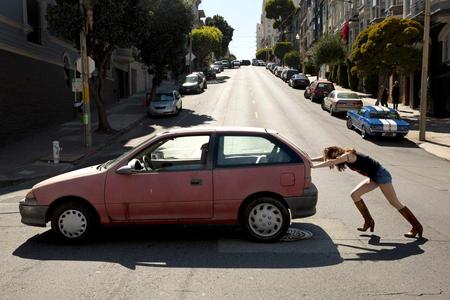
By Sofia FRitchie
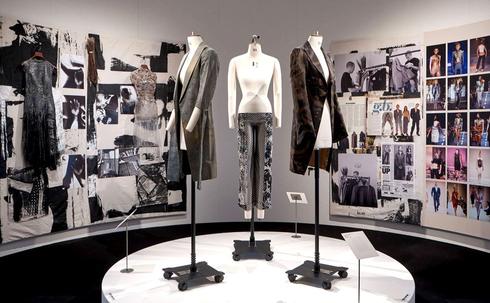
The Design Museum’s pioneering exhibition REBEL: 30 Years of London Fashion, a collaboration with the British Fashion Council (BFC), marks 30 years since the creation of the BFC’s NEWGEN programme, which nurtures up and coming designers to build their brands The exhibition has been curated by Sarah Mower MBE and Rebecca Lewin, and displays almost 100 fashion ground breaking looks, spanning decades, that have had a profound influence on the landscape of London fashion It includes fan favourites, such as the outfit from Harry Styles’ ‘Golden’ music video by Steven Stokey Daley, and Sam Smith’s inflatable latex suit that he wore to the BRIT Awards. Collectively the exhibition offers an innovative insight into UK fashion and design which has rarely been seen before on this scale (the DESIGN MUSEUM, n d )
“a scintillating celebration of the people who make London so chic”
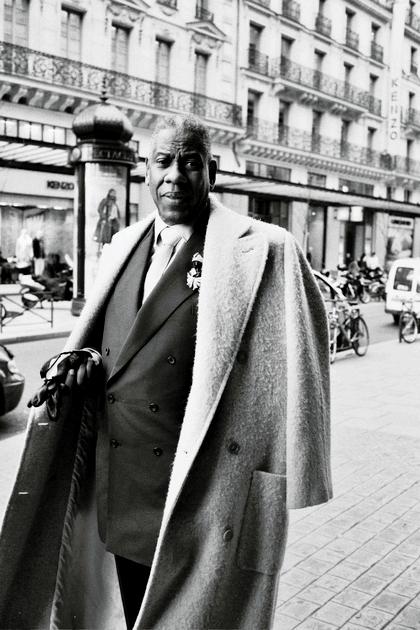
BY Ursula ROWLAND

Having read André ‘Ray’ Leon Talley’s ‘The Chiffon Trenches’, it is clear that he did not expect what life had in store for him (Chiffon Trenches, 2020). While other kids’ walls were papered with baseball cards, Talley’s were papered with pages from Vogue magazine Despite this he only envisioned himself working in the fashion industry as a complete fantasy.
Talley made many weekend trips as a teenager to the predominantly white part of Durham North Carolina for the purpose of buying Vogue magazines to populate his lknlk
walls. He excelled in French and earned a B A in French Literature at North Carolina Central University in 1970 (Als, 1994) From there he went on to win a scholarship to Brown University, Providence Rhode Island, and graduated in 1972 with a Master of Arts in French Literature. He loosely aimed to become a French teacher at a private school somewhere, not knowing precisely what he wanted to do
Brown was where Talley first showed a semblance of the character he was to become later in life, partially influenced nklk

by his study of Baudelaire and the image of the Baudelairean flâneur. He was always draped in numerous cashmere sweaters and went out to buy Louis Vuitton suitcases with his meagre teachingassistant stipend
A fellow student’s parent at the Metropolitan Museum of Art recommended that he volunteer for Diana Vreeland (fashion editor for twenty-five years at Harper’s Bazaar and editor-inchief for eight years at Vogue) and Talley was finally able to realise his dreams. It was at Vreeland’s 1974 exhibit titled ‘Romantic and Glorious Hollywood Design’ where André was given his first hazing from the notoriously particular Vreeland, who liked to have her paper money ironed and the soles of her shoes buffed with a rhinoceros’s horn As Talley describes in ‘The Chiffon Trenches’, he was ‘handed a shoebox filled with metal discs and a pair of needle-nose pliers.’
He was told to ‘“fix it”’
Talley’s work was inspected by Vreeland herself, and from then on, he stayed by her side ‘night and day’ in preparation for the exhibition. Talley’s account of Vreeland’s manner of speaking is perhaps the most honest one you’ll find out there (‘Mrs Vreeland spoke in staccato sentences … “Let’s go, kiddo! Get crackin’ Right-o, right-o, I say, André!”’), and it is no surprise that he moved on to be the only one ever to be able to tell Anna Wintour, current editor-in-chief of Vogue, she looked bad in a dress
Perhaps the most significant thing Talley learned from Vreeland was the subtle art of polishing his Vuitton luggage with yacht varnish, yes, yacht varnish Of course, he learned other things from Vreeland that shaped his iconic persona, but Talley had ‘already constructed a recognisable precursor to the André Leon Talley of today’, as Hilton Als explains in his 1994 article The Only One concerning the fashion legend
It wasn’t enough for Vreeland to just take Talley under her wing because she soon became so impressed by his skills that she began introducing him to all the right people and inviting him to all the right parties Consequently, André began to work at Andy Warhol’s Interview magazine and Factory. “The Chiffon Trenches” describes Fred Hughes, Warhol’s right-hand man, coming up to Talley at one such party, saying Vreeland had told him he simply must have Talley working with him).
Of Warhol, Talley was especially fond; when he was in a ‘good mood’, Warhol created small, signed pieces of art for his staff, including a silkscreen print titled
Candy Box (True Love), which a recent auction of the late Talley’s belongings uncovered
It's hard to put a finger on exactly when Talley became friends with Karl Lagerfeld, head creative designer at Chloé in 1975, because Talley is very unclear about it: all the information you can find says that he met Lagerfeld while ‘at tea’ with Warhol
Except in “The Chiffon Trenches”, in which Talley, surprisingly, reveals all When Warhol’s Interview was planning its Paristhemed issue, Lagerfeld was reportedly due in New York to promote his new Chloé fragrance, and Talley was chosen to conduct the interview with him, which he was ‘eternally grateful for. (Chiffon Trenches, 2020)
After that came the fateful ‘high tea’ that Talley would breezily refer to as the moment he and Lagerfeld cemented a friendship that would last for forty years, ‘until it didn’t (Chiffon Trenches, 2020). Talley describes that moment as one which consisted of Lagerfeld ‘throwing beautiful silk crêpe de chine shirts in Kelly green and pink peony, each with a matching scarf’, at him,saying ‘“Take this. It will look good on you. Take that I am tired of these shirts! You should have them ”
After working at various other publications, Talley finally achieved his childhood dream of working at American Vogue magazine, where he later became editor-at-large to, and where he also formed his famous friendship with Anna Wintour Lagerfeld’s general manner was perhaps where Talley developed his particular style of generosity, as revealed in discussion with Plum Sykes, one of the 1997 contributing editors on fashion at American Vogue and assistant in Talley’s time
Vogue and assistant in Talley’s time
Sykes recalls of Talley that he once arrived at her little office, ‘and, sort of … descended into the room ’ He said Lagerfeld had gifted him something and presented an enormous Fendi pony print travel-bag to her, saying, ‘Darling, have it. Darling, you need it more than me. ’
Then, she says, ‘he floated out of the room. He always seemed to fill the entire space ’ , At the end of his life and career, he left with many heartfelt memories and gifts with those that surrounded him Talley was laid to rest at the cemetery Mt. Sinai Baptist Church in North Carolina, where he grew up, leaving his intellectual property to The Abyssinian Baptist Church in Harlem, which he was a member of. Proceeds from an auction of his belongings at Christie’s we donated to the Abyssinian and his Mt Sinai Baptist Church.
Talley was a giver, until the very end.

R E B E L L I O N I N F A S H I O N

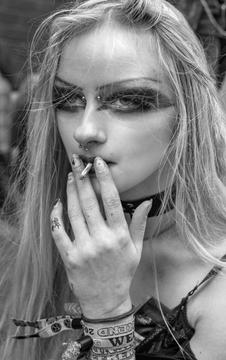











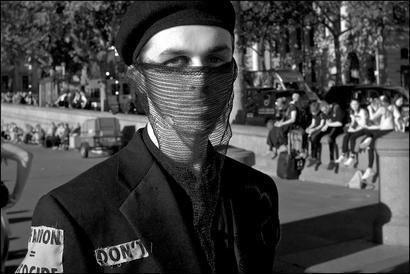
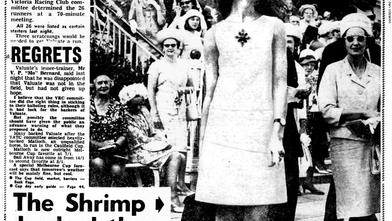
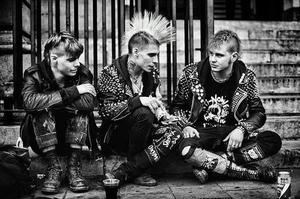
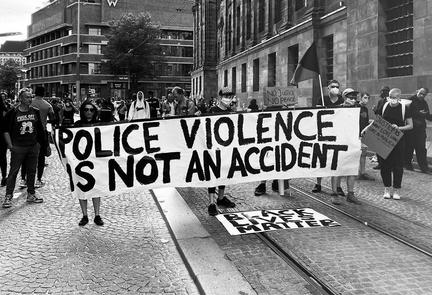
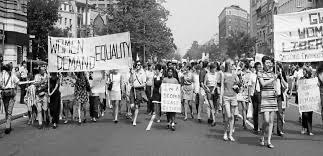
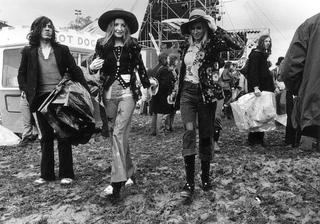
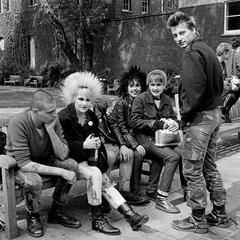

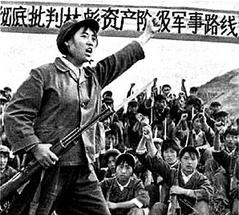

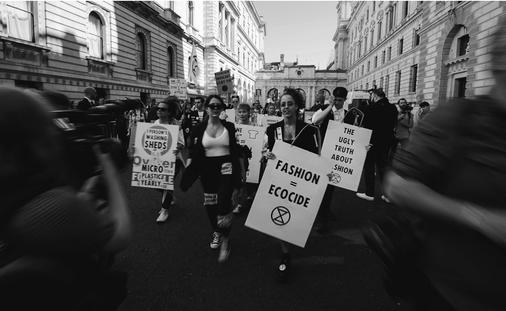
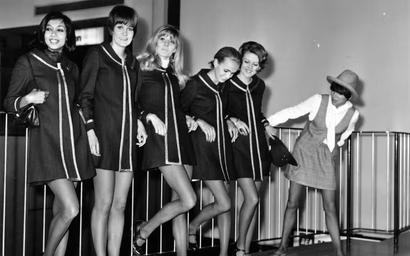

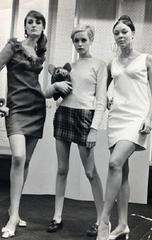

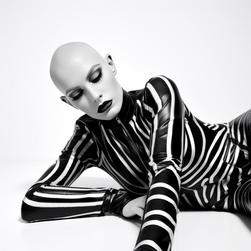

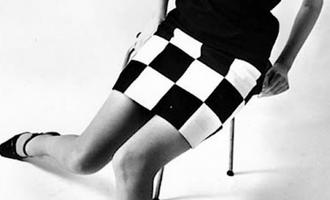

“FASHION SHOULD BE A FORM OF ESCAPISM, AND NOT A FORM OF IMPRISONMENT”
- Alexander McQueen
Rebellion is the EPITOME OF INNOVATION in the fashion industry. New IDEOLOGY, CUT, AESTHETICS and PHOTOGRAPHY is born as a result of the effort made to disregard conventionality. It will undeniably produce a difference in society whether the effect was intended or not. It gets people talking: opposing or embracing. So, we have dedicated a section of this issue of Rouge to embrace all the REBELLIOUS decisions made by fashion pioneers to hopefully allow a wider audience to appreciate the art of rebellion and its undeniable impact. With rebellion being prominent in fashion, we chose to perceive the process and the capturing of rebellion in specific themes: COLOUR, MEDIUM OF PRESENTATION, and the CULTURAL INFLUENCE THAT LEADS TO REBELLION.
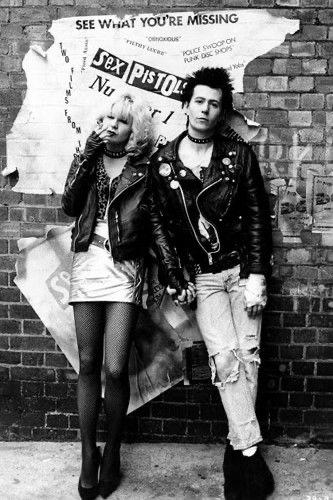


The colour black in fashion is constantly used and worn by most in the fashion industry, so some may infer black to be a safety colour that is used out of convenience However, like most design decisions made by designers, there is a motive behind this colour choice If we look into the reasons why many designers and subcultures wear black it proves to be quite the opposite of convenient. When they look at black as a colour, they think of it as a way to express their rebellious attitude towards mainstream beliefs and expectations. But it was not always this way
Historically, the colour black has had a considerably contrasting symbol in Western society. In the Middle Ages and the 14th century, Judges and royalty wore black, thereby symbolising authority and courtliness However, in the 17th century, black became associated with witches and the devil, so black became a symbol of evil Then in the 18th century, connotations of black were influenced by the romantic movement to be more of a portrait of emotion, rather than a colour that represented religious superstitions, that connotation became Melancholy Later, in the 20th century, black developed to become the colour of Italian and German Fascism, taking on a political role. Finally, at the end of the 20th century black started
to emerge as a symbol of social rebellion and free thought; this has stayed relatively the same ever since Although the significance black holds right now is not in its final state, and probably never will, I believe that the current meaning the colour black holds is partially a combination of all the past types of messages it held before Therefore, many over the 1900s and 2000s have used black in their style and clothing to address their own political, religious, and emotional state of mind. (HISOUR, n.d.)
One obvious example of this are punks. They emerged as an act of rebellion against the growing popularity of the corporate lifestyle, It also allowed people to inch away from the popularity of the hippy movement emphasising harmony and nature (Street, n d ) Because of the hippies relaxed and set back attitude towards the world, their clothing tended to be flowy and ethereal So, to rebel against mainstream societal norms and specifically the hippy ethos, punks went in the complete opposite direction, in terms of fashion sense, by wearing clothes that included spikes, harsh black leather, tight denim, and ripped tees held together by safety pins. This style became like an accessory to their nonconformity attitudes. Punks being anarchists, black holds heavy meaning as it relates to the black flag of anarchism; it represents strength and determination. (Goodman, 1968) By wearing black clothing, it is a reminder for both themselves and society that they are not surrendering to social rules and expectations. This movement was led by Malcolm McLaren and Vivienne Westwood in the UK who dressed many leading punk public figures like sex pistols (Marie Clair, 2015); They criticised McLaren and Westwood (Tuzio, 2020) All in all,
this post-war social movement led by youths gave an insight for younger generations to not consider the social norm as the only guidance to life and to make the world a better place by speaking up about what is right and what they stand for So not only did they give newly found hope to the younger generations, but also popularised a strong political message of 'individuality' to
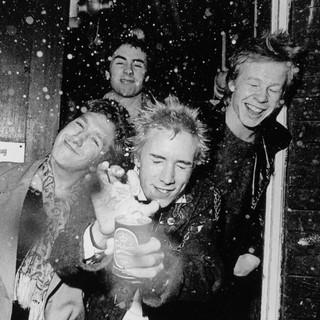
influence the way society perceives blacks
Now more specifically, Rei Kawakubo is a Japanese designer and founder of Comme des Garcon, which is a fashion house highly influenced by punk aesthetics She has been constantly grappling with the standard concept of what is considered fashionable since her debut collection in 1981 Paris Fashion Week where she already started to curate her iconic use of black as it was mostly monochrome (The Met, 2017).
Throughout her career, she has had an unapologetic ........
attitude towards not dressing customers to be objectified but dressing them through the incentive to empower people, leading her to not put up mirrors in the changing rooms of her shops as Kawakubo wanted her customers to prioritize how they felt in the clothes, not necessarily how they looked in it.
resistance and self-importance (CartnerMorely, 2018).
Kawakubo's latest collection which was presented in the Paris Fashion Week

This has led to Kawakubo making black become a colour that signifies showed all black garments except for the closing look which was all white Kawakubo said that this collection was an expression of her, "present state of mind", Kawakubo tried to emphasise her " anger against everything in the world, especially against [her]self"
The anger she feels is perfectly depicted in the monochrome collection with her usual exaggerated
sculptures As the collection of pieces progresses, the details on the garments become more and more deconstructed, which seems to demonstrate the deterioration of her state of mind as a consequence of her anger This idea is heightened by the colour black as the thick material of the garments reflects light and unleashes the many creases and turns, which is to show Kawakubo's overwhelming frustration, as her mind toils away at the feeling of anger (Blanks, 2024) The most recent collection tells that this 81 year old fashion powerhouse has mastered the use of the colour black; she was awarded an Excellence in Design Award by the Harvard School of Design in 2000; she was dubbed as the inventor' of black, -

which she is still embodying to this day (Lavicka, 2000). Thanks to the rebellious nature of many designers such as Vivienne Westwood and Rei Kawakubo, the 21st-century definition of black is taking shape However, as a consequence of black's versatility to represent many states, it will be difficult to pin down what black specifically means in the context of fashion One of our biggest reminders is the little black dress that Audrey Hepburn wore in Breakfast at Tiffany's designed by Givenchy in 1961 (Christies, 2006) that portrays elegance in tradition. Black can and will continue to hold many nuances in fashion as future designer ideas enter the industry, but rebellion and self-expression will forever be one of my favourites

By Piper Chatwin
Rebellion is unique in art contexts because of its silent, inconspicuous ability to overwhelm the zeitgeist and fundamentally shift an industry In fashion, we often observe rebellion as new, terrifyingly outlandish trends that eventually define the status quo Consumerism and fast fashion have allowed the eccentric to become the norm. But what about how fashion is documented? The way we capture and portray fashion, new trends, and unconventionality is ultimately rebellious in itself Photography is the foremost proponent of fashion media: it is how we translate beauty and vogue to the consumer, disseminating fashion and its trends across the world.
Fashion photography began with the rise of major khbkjkb
fashion magazines like La Mode Pratique and Harper’s Bazar in the late 19th century. Paris was the original center of fashion, and with it, fashion photography, but its popularity soon spread to America. During the 1930s, the US became the focus of the fashion world, and photographers in New York City like Edward Steichen, Cecil Beaton, and Martin Munkácsi became staple names of contemporary fashion photography.(Dylan M Howell, 2023) These names contributed to the making of fashion photography in the modern sense - as an art
Hungarian Martin Munkácsi introduced the concept of motion into the world of fashion, bringing vitality and buoyancy to a previously static realm. (Howard Greenberg Gallery,n.d) (1,2) And here, the rebellion
(Howard Greenberg Gallery,n.d) (1,2) And here, the rebellion begins Clothing was now photographed in action, instead of austerely, on still models.(Vince Aletti, 2007) Models wore expression and emotion to complement the clothing, giving fashion more meaning in everyday contexts.(Howard Greenberg Gallery,n d) Munkácsi’s work with motion was a large inspiration for another revolutionary fashion photographer, known as Richard Avedon.(Vince Aletti, 2007)
Richard Avedon was a major leader in the rebellion of motion in fashion photography He aimed to capture people and their liveliness first and foremost, going beyond clothing to convey a model’s personality In his early work, his subjects created almost personas of glamour and imagination

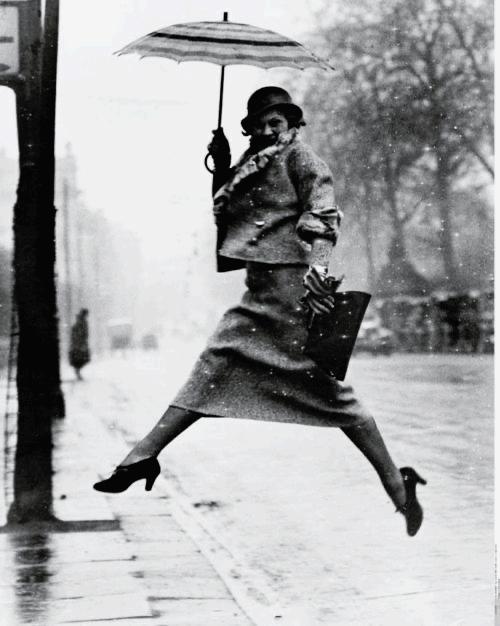




personality In his early work, his subjects created almost personas of glamour and imagination. (3, 4)
Using bizarre themes and strong silhouettes Avedon crafted an editorial look to his photos (Alexia Petsinis n.d) He continued Munkácsi’s legacy of motion in photography, using scenes of models jumping in midair, laughing, running dancing, and falling in the majority of his portfolio (5,10)

Throughout his career, Avedon photographed many celebrities in and outside of the fashion sphere. He worked with Audrey Hepburn, The Beatles, Martin Luther King, Jr., Marilyn Monroe, President Eisenhower, and Tupac Shakur, to name more than a few (6, 7) (artnet, n d) In 2023, The Met Museum in New York City exhibited his mural photographs, which he captured later in his
career through experiments with a large format camera These “murals” included phototographs of the major political figures of the Vietnam War as well as Andy Warhol with members of his factory (8).(The Met, n d) While they deviate from the fashion world, they utilize his recognizable style of cinematographically-lit models contrasted against a white background
Munkácsi’s and Avedon’s contributions to fashion ....in

photography remain large influences today and Contemporary fashion photography holds onto their rebellion of movement: expression and motion which continues to appear on the covers of many fashion magazines like Vogue (9). This rebellion demonstrates that clothing is not simply the fabrication and appearance of the garments, but instead, it is a feeling, a culture, and a passion that connects and galvanizes society.
Fashion photography has come a long way from mundane, still photographs of clothing. It now possesses the qualities of creative art, even within its focus on the distinct world of haute couture Its evolution is a testament to the internal rebellion it experienced in the world’s transition from the modern age of fashion.

BY HEIDI MUILLI
Fashion has always served as a dynamic medium in constant motion This continual evolution is due to one phenomena, rebellion. Rebellion, by the dictionary, is, “action against those in authority, against the rules, or against normal and accepted ways of behaving”(Cambridge Dictionary, n d ) Fashion’s rules have bent and twisted over the years, and every time a new norm has been established, a creative, liberated mind has intervened and brought forward new ideas that pivot the societal norms of fashion against themselves, steering fashion to a different angle. In the past, an example of rebellion would be the introduction of trousers to womenswear in the mid-19th to 20th centuries, due to the dress reform movement and the practical needs of newly working women during and after WW1 and WWII. (Editors of Encyclopaedia Britannica, 2019). In current times rebellion can almost be seen as a trend in the fashion world, as millions take to social media, dressing as outlandishly as possible in an attempt to go viral. The diminished effects of rebellion in fashion can be attributed to a rise in short-form social media platforms, such as TikTok and Instagram, both having a combined total of 2 4 billion active users, most of which are young people, who are extremely susceptible to being easily influenced by media trends. (Woodwar, M, 2024)
In the 1980s there was a huge surge in Japanese designers bringing Japanese-inspired fashion to the forefront of Western media. Designers such as Issey Miyake, Gnyuki Torimaru, Rei Kawakubo and Yohji Yamamoto began what has been called the “antiestablishment in fashion ” (Lamber, M, 2015) This began with Yamamoto and Kawakubo’s Paris 1981 show which showcased the Japanese fashion subculture, Karasu- Zuko, crow tribe fashion This fashion subculture was heavily based on the idea of only wearing dark clothing and being extremely androgynous. It was a rebellion in itself as it was a public response to the feminine kawaii aesthetics prominent in Japan in the 60s and 70s The movement emerged as women rebelled against dressing for the male gaze and began to dress for themselves, singling themselves out as independent women. (Lavan, W, 2021). The wave of rebellion through this subculture was so immense that it made it into the Western world of fashion. Comme des Garcon’s 1981 show was called ‘Hiroshima Chic’ by journalists and featured fluid silhouettes that could be worn by both men and women, the clothes were made up of layers of loose-fitting fabrics that created abstract shapes and interesting hemlines. Yamamoto and Kawakubo subverted preconceived western ideas and relationships between the body and clothing whilst launching one of the first unisex collections ever into the Western fashion space.
The ideas of genderless clothing brought into the international fashion headspace by Japanese creatives is still in practice in the current world in many well-established brands such as Daniel W Fletcher, Telfar, Yamamoto’s Y’s and Toogood, who had a collaboration with Selfridges in 2015 named ‘Agender’ which Selfridges said was, “an environment in which you are given the freedom to transcend notions of ‘his’ and ‘hers’” to show that
genderless clothing could be the future of fashion (Too Good, F, 2015) The era of rebellion of unisex Japanese fashion in the 80s is still extremely prominent today, manifesting itself in men ’ s skirts and dresses, highlighting how traditional women ’ s clothing can be unisex too
Rebellion was also pioneered by a Japanese designer, Issey Miyake Well known for his use of pleating, Miyake was one of the first designers to explore the relation of 2-dimensional fabric to the body, bridging Japanese and Western techniques. Traditional kimonos are made up of completely flat fabrics with none of the darts and curves of Western clothing, Miyake used this material approach in his works, designing clothes by making the fabric and was a pioneer in fabric manipulation. (Schoenfeld, E) Miyake displayed his ideas and passion for fabric manipulation through the pieces in the spring/summer 1985 collection. He used his signature pleats for most of the looks featured on the runway to create different forms and silhouettes. Introducing a new concept into the fashion sphere, the art of fabric manipulation to create fluidity Miyake defined the garments he made as “clothes for living” and rejected the term ‘fashion’ as his clothing fit into a category of their own that was a mix of art, clothing, architecture, and technology(De Mallet-Burgess, I, 2022) His unique outlook on design and almost architectural elements of each of his pieces was rebellious as he allowed the public to view fashion from an entirely distinct perspective, where clothing was “conceptual, yet practical and comfortable” (De Mallet-Burgess, I, 2022). Miyake then inspired a wave of ecoconsciousness within the industry with his 1997 project, A-POC, ' a piece of cloth’, where he created a tube-knitted garment that could be cut to a desired length by a wearer to minimise waste Innovatively, Miyake used a machine to make rolls of fabric that were pre-fused together in finished patterns and required the buyer to cut the different garments out of the fabric. A singular roll of fabric gave the buyer a loosely fitting top, bra, skirt, briefs, socks, mittens, .....




armbands, a hat, and a handbag (The Met, 1999) Miyake was rebelling against the world in many ways, he spoke out against the normalisation of mass fabric waste production by the industry, while he also rebelled against the rise of hyper-sexualisation in Western cultures by “Liberating the body from the constricting shapes of clothing” (Miyake, I) The prioritisation of practicality and comfort in Miyake’s design process allowed him to lose the human silhouette, using it solely as a base for his exaggerated forms
The designer then went on to further his rebellion by projecting his inclusive vision of fashion into the public eye via the models used for his runways, opposing the Eurocentric looks that were popular and introducing diversity in the modelling industry. In the spring/ summer of 1976, Miyake staged a runway called ‘Issey Miyake and Twelve Black Girls’, focusing on pushing Black female models into the spotlight, disapproving the segregation faced by Black models in the 70s, and empowering them by giving them their stage (UAL, 2016) The lead in the show was Grace Jones, a Jamaican, singer, model and actress, whose career skyrocketed after working closely with Miyake over many years
Overall, Western fashion would not be the same if not for the influence of Japanese rebels. Art historian, Richard Martin says that “We in the West have seen our world transformed by Japanese dress It is impossible to describe and analyse late twentiethcentury fashion in Europe and America without taking account of the substantive contribution of Japanese design ” (Martin, R, 1995) This statement is extremely true as without the influence of Japanese design, we may not have achieved such genderless, comfort-orientated clothing in the Western world until much later. This highlights how globalisation is key to fashion’s continuous evolution as are the forever shifting gender boundaries in society. Ultimately, the Japanese rebellion has been integral in shaping Western fashion as we know of it today.
Upcoming Designer: Mcfall, Marni Rose (2023) Style, Identity and Empowerment Retrieved from https://www flannels com/stylenews/post/magda-butrym-interview De Klerk, Amy (2018) #TheBrand: Magda Burtym Retrieved from https://www harpersbazaar com/uk/fashion/fashionnews/a23355016/magda-butrym-about-interview/ Repcyte, Monica. (n.d.). Magda Burtym - A romantic soul from Poland https://metalmagazine eu/en/post/magda-butrym-a-romantic-soulfrom-poland Kim, Monica. (2019). Magda Burtym on life in Warsaw and her fall 2019 collection Retrieved from https://www vogue com/vogueworld/article/magda-butrym-fall-2019warsaw-poland-inspiration
Photos:
Page 1: MAGDA BUTRYM PRE-FALL 2020, Lily Jean Harvey (Model), Sonia Szóstak (Photographer) Page 3(Top): Magda Burtym n d Page 3 (Bottom): Magda Burtym PF22 by Robin Galiegue
Recommended Viewings:
Britannica (n d ) Marie-Antoinette Retrieved from Britannica: https://www britannica com/biography/Marie-Antoinette-queen-ofFrance
Brown, A (2021, December 16) Sofia Coppola’s Marie Antoinette & Its Masterful Costume Design Retrieved from Medium: https://anastasiabrownn medium com/sofia-coppolas-marie-antoinetteits-masterful-costume-design-84b8145ed79d
IMDb (n d ) Girlboss - Awards Retrieved from IMDb: https://www imdb com/title/tt5706996/awards/ IMDb (n d ) Girlboss- Plot Retrieved from IMDb: https://www imdb com/title/tt5706996/plotsummary/?ref =tt ov pl IMDb (n d ) Marie Antoinette - Awards Retrieved from IMDb: https://www imdb com/title/tt0422720/awards/ IMDb (n d ) Marie Antoinette - Plot Retrieved from IMDb: https://www imdb com/title/tt0422720/plotsummary/?ref =tt ov pl
Otterson, J (n d ) ‘Girlboss’ Canceled After One Season at Netflix Retrieved from Variety: https://variety com/2017/tv/news/girlbosscanceled-netflix-1202477802/
sserc (n d ) Elephant's Toothpaste Retrieved from sserc: https://www sserc org uk/subject-areas/chemistry/chemistryresources/elephant-s-toothpaste2/#: :text In%20a%20measuring%20cylinder%20100,comes%20out% 20of%20the%20cylinder
the DESIGN MUSEUM (n d ) REBEL: 30 Years of London Fashion Retrieved from the DESIGN MUSEUM: https://designmuseum org/exhibitions/rebel-30-years-of-londonfashion#
Photos:
Page 1(top): Marie Antoinette - Sofia Coppola, New York Times
Page 1 (bottom): Marie Antoinette - Sofia Coppola, MUBI
Page 2 (top right): Exhibition photography by Andy Stagg
Page 2 (bottom): Girlboss - Netflix, Bravo tv Page 2 (bottom): Karen Ballard - Netflix
Fashions Dirty Secrets
Condé Nast (n d ) The Sustainable Fashion Glossary Retrieved from https://www condenast com/glossary/environmental-impacts-offashion/co2-emissions
A, D P (Director) (2022) India: How our clothes cause water pollution [Motion Picture] Bandera, G (2022) Fair Planet Retrieved from https://www fairplanet org/story/how-the-fashion-industry-pollutesour-water/ Crann Organic (n d ) Retrieved from https://crannorganic com/blogs/crann-organic-blog/is-polyesterplastic#: :text=Polyester%20clothing%20is%20made%20from,consider ed%20a%20type%20of%20plastic
European Environment Agency, (2023) Retrieved from https://www eea europa eu/publications/microplastics-from-textilestowardsa#: :text=About%208%25%20of%20European%20microplastics,globa l%20marine%20environment%20each%20year Gusta, A (2023) Ecoswap Retrieved from https://ecoswap uk/top-10-sustainable-fashion-quotes/ K Nanthini, P P (2022) The Egyptian Journal of Aquatic Research Retrieved from https://www sciencedirect com/science/article/pii/S1687428522000218 #: :text=Overall%20reported%20the%20impacts%20of%20microplasti cs%20on%20marine reduction%20of%20reproductive%20fitness%20 %28Li%20et%20al %202018%29 Kell, K (n d ) going zero waste Retrieved from https://www goingzerowaste com/blog/microplastics-what-are-theyand-what-can-we-do-aboutthem/#: :text natural%20fibers%20that%20don%E2%80%99t%20sh ed%20microplastics%201%20Cotton,6%20Rayon%207%20Viscose%2 08%20Bamboo%20More%20items
Newburger, E (2022) CNBC Retrieved from https://www cnbc com/2022/06/10/microplastics-found-in-freshantarctic-snow-for-first-time- html
Okafor, J (2022) truvst Retrieved from https://www trvst world/sustainable-living/fashion/environmentalimpact-of-cotton study com (n d ) Retrieved from https://homework study com/explanation/how-does-monoculturecause-soilerosion html#/: :text=Monoculture%20can%20cause%20soil%20erosio n,the%20ability%20to%20prevent%20erosion team, S S (2024) Sewport Retrieved from https://sewport com/fabrics-directory/cottonfabric#: :text=Approximately%2075%20percent%20of%20the%20wor ld’s%20clothing,products%20contain%20at%20least%20some%20amo
unt%20of%20cotton
UN environmental agency (2019) Retrieved from https://www unep org/news-and-stories/story/fashions-tiny-hiddensecret
Designer Spotlight: Alexander McQueen
V&A (n d ) Alexander McQueen - an introduction https://www vam ac uk/articles/alexander-mcqueen-an-introduction
Biography (2022). Alexander McQueen
https://www biography com/history-culture/alexander-mcqueen photos:
Page 1&2: Savage Beauty - Alexander McQueen, Metropolitan Museum
Page 3 (Top): The Horn of Plenty - Alexander McQueen, AW09
Page 3 (Middle): Its only a game - Alexander McQueen, SS05
Page 3 (Bottom): Highland Rape - Alexander McQueen, AW95
Page 4 (Top Left): Widows of Culloden - Alexander McQueen, AW06-7
Page 4 (Top Right): Alexander McQueen, SS99
Page 4 (Middle left): “Black” retrospective show - Alexander McQueen, SS04
Page 4 (Middle Right): Alexander McQueen, 2000
Page 4 (Bottom left): Platos Atlantis, SS10
Page 4 (Bottom Right): Alexander McQueen, AW09-10
Decade in Detail:
Masterclass (2022) 1990s Fashion: Subcultures and Trends Retrieved from Masterclass https://www masterclass com/articles/1990s-fashion Night (2018) How To Dress In True Grunge Fashion Retrieved from The black ravens https://theblackravens com/blogs/black-ravens-blog/nirvana-edgyclothing/ Nesvig (2023) Get the Grunge Aesthetic Like Kylie Jenner, Willow Smith and More With These Tips and Outfit Ideas Retrieved from teen vogue https://www teenvogue com/story/grunge-aesthetic-style-guide Phelps & Borrelli-Persson (2015) 25 most unforgettable runways from
Photos:
Page 1: Kate Moss in a 1990s Calvin Klein ad Wikipedia Page 2(top): Nirvana singer Kurt Cobain in 1991 - Paul Bergen/Getty Page 2 (Bottom): Marc Jacobs for Perry Ellis Spring 2003 backstageFairchild Archives
Memoir:
Chiffon Trenches (2020) A Memoir by André Leon Talley Als (1994) Hilton Als, The Only One, The New Yorker, November 1994 issue Retrieved from https://www newyorker com/magazine/1994/11/07/andre-leon-talleyvogue-the-only-one
Photos:
Page 1: André Leon Talley, walking down the street n d Page 2: André Leon Talley, right, with Paloma Picasso, left, at a 1979 Chloe benefit fashion show in New York Photograph: Rex/Shutterstock Page 3: Vreeland and Young Talley at Romantic and Glorious Hollywood Design
Page 4: Karl Lagerfeld and André Leon Talley at the Lajeski gallery, 1975
Rebellion in Fashion Photography:
The Met (n d) https://www metmuseum org/exhibitions/richard-avedonmurals
Harper’s Bazaar (n d) https://harpersbazaar com au/richard-avedonphotography/ Dylan M Howell (n d) https://dylanmhowell com/history-fashionphotography/#: :text=It%20is%20believed%20that%20fashion,of%20ph otography%20and%20screen%20printing
Howard Greenberg Gallery (n d)
https://www howardgreenberg com/artists/martin-munkacsi
The New Yorker (2007, February 25)
https://www newyorker com/magazine/2007/03/05/a-sparkling-eye
Artnet (n d) https://www artnet com/artists/richard-avedon/ photos:
photo 1: Lucile Brokaw, Harper's Bazaar, December 1933 Photographed by Martin Munkácsi
photo 2: Puddle Jumper, 1934 Photographed by Martin Munkácsi
photo 3: Twiggy, January 1968 Photographed by Richard Avedon
photo 4: Dovima with Elephants, Harper’s Bazaar, August 1955
Photographed by Richard Avedon
photo 5: Vogue, October 1966 Photographed by Richard Avedon
photo 6: Audrey Hepburn, January 1967 Photographed by Richard Avedon
photo 7: Reverend Doctor Martin Luther King Jr Martin Luther King and Martin Luther King III March 1963 Photographed by Richard
Avedon
photo 8: Outtake from Andy Warhol and members of the Factory, October 1969
Photographed by Richard Avedon
photo 9: Shalom Harlow - Vogue China, November 2023 Photographed by Ned Rogers
photo 10: Kate Moss for Versace 1996 Photographed Richard Avedon
Pat McGrath: Her Relationship with the Runway and Editorial Makeup
Selfridges&Co (n d ) Pat McGrath: The Story of Mother Retrieved From https://www selfridges com/GB/en/features/articles/selfridges-loves/thelegend-of-pat-mcgrath/
Beauty Matter. (2017) 5 steps to success: Pat McGrath product launch Retrieved from https://beautymatter com/articles/5-steps-to-success-patmcgraths-product-launch-strategy
Schnurr (2021) For Makeup Artist Pat McGrath, These Are the Keys to Success Retrieved from https://www eonline com/news/1312645/forcelebrity-makeup-artist-pat-mcgrath-these-are-the-only-businessmistakes-you-can-make
Bailly (2021) The Genius of Pat McGrath Retrieved from https://www allure com/story/pat-mcgrath-cover-interview-february2021
Dunn (2018) Women in Business Q&A: Pat McGrath Retrieved from https://www huffpost com/entry/women-in-business-qa-patmcgrath b 5a5dc818e4b003efadb6b0b4
Sowray (2012) Pat McGrath Retrieved from https://www vogue co uk/article/pat-mcgrath-biography
Kuznetsova. (2023) How Pat McGrath Disrupted the Beauty Industry Influences of the Japanese Rebellion on Western Fashion Photos:
Page 1: Pat Mcgrath for John Galliano AW07
Page 2 (left): Pat McGrath for Maison Margiela Spring 2024 Couture fashion show
Page 2 (right): Pat McGrath for Christian Dior Fall 2003 Couture fashion show
Page 3 (Top): Pat Mcgrath, Photo by Ben Hasset
Page 3 (bottom): Pat McGrath makeup trends ss15 x max factor mod tv
Rebellion in Fashion images: https://docs google com/document/d/158z2kNjFEyjJ4P4BjG8NHk 0LJADdjDJ2cx4icT11Y/edit
Black: Rebellion and Punks
HISOUR, (n d ) Black colour in history and art Retrieved from https://www hisour com/black-color-in-history-and-art-26606/ Street, (n d ) Beyond peace and love Retrieved from https://www museumofyouthculture com/hippies/ Goodman, (1968) The Black Flag of Anarchism https://theanarchistlibrary org/library/paul-goodman-the-black-flag-ofanarchism Marie Clair, (2015) Anarchy in the UK: A Brief History of punk fashion https://www marieclaire co uk/fashion/a-brief-history-of-punk-fashion79145 Tuzio, (2020) Vivienne Westwood and Punk Culture https://www collater al/en/vivienne-westwood-punk-culture-style/ The Met, (2017) Rei Kawakubo/Comme des Garçons - Art of the Inbetween https://www metmuseum org/exhibitions/listings/2017/rei-kawakubo Cartner-Morely, (2018) A rare interview with Comme des Garçons designer Rei Kawakubo https://www theguardian com/fashion/2018/sep/15/a-rare-interviewwith-comme-des-garcons-designer-rei-kawakubo Blanks, (2024) In Paris, Comme and its Children https://www businessoffashion com/reviews/fashion-week/comme-desgarcons-junya-watanabe-noir-kei-ninomiya-sacai-paris-fashion-weekwomenswear-autumn-winter-2024/? utm source=instagram&utm medium=social&utm campaign=likeshopm e&utm content=www instagram com/p/C4IVrjGRpGL Lavicka, (2000) Making Friends https://www thecrimson com/article/2000/5/12/making-friends-pfontfaceverdana-arialhelveticabfashion-people/ Christie’s, (2006) Live auction, Audrey Hepburn Breakfast at Tiffany’s, 1961 https://www christies com/en/lot/lot-4832498
Photos: Page 1: Sid and Nancy, 1986 movie
Page 3: (top): Sex pistols n d
Page 3 (Bottom): Comme de Garcons FW 2024
Page 4: Comme de Garçons FW 2024
Influence of Japanese rebellion on western fashion Cambridge Dictionary, (n d ) Meaning of rebellion in English https://dictionary cambridge org/dictionary/english/rebellion Woodward, (2024) TikTok user statistics 2024: everything you need to know https://www searchlogistics com/learn/statistics/tiktok-user-statistics/ Lambert, (2015) How Japanese designers pioneered gender-neutral dressing https://www independent co uk/artsentertainment/art/features/how-japanese-designers-pioneeredgenderneutral-dressing-a6769676 html Lavan, (2021) Karasu- Zoku (カラス族)’ https://www tokyocowboy co/articles/karasu-zokuMenkes, (2000) Fashion’s Poet of Black: YAMAMOTO https://www nytimes com/2000/09/05/style/IHT-fashions-poet-of-blackyamamoto html
TOOGOOD, (2015) Agender https://www selfridges com/GB/en/features/articles/content/agender-theconceptspace/ Schoneveld, (n d ) Constructed flatness
https://dsomeka haverford edu/japanesemodernism/exhibits/show/isseymiyake/constructedflatness
De Mallete Burgess, (2022) The democratic designs of Issey Miyake https://metropolisjapan com/the-democratic-designs-of-issey-miyake/ The Met, (1999) Ensemble https://www metmuseum org/art/collection/search/185792# Yamada, (2022) The fabric of timelessness in the visionary designs of Issey Miyake https://www japantimes co jp/life/2022/08/10/style/issey-miyake-legacy/ UAL, (2016) Visual fashion Issey Miyake https://ruchida0420161 workflow arts ac uk/issey-miyake
Martin, (1995) Our Kimono Mind: Reflections on ‘Japanese Design: A survey since 1950 https://www jstor org/stable/1316033
Photos: Page 3 (Top): Image taken at the Issey Miyake spring-summer 1999 collection, Photograph: Yasuaki Yoshinaga
Page 3 (Bottom): Pleats Please Issey Miyake | autumn/winter 1999 Francis Giacobetti
Word Search: https://thewordsearch com/maker/